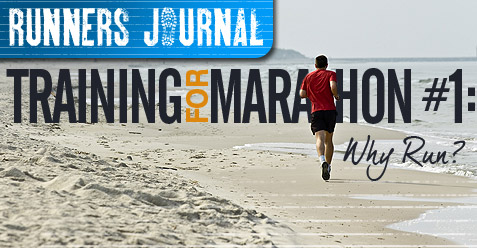
Ah, the curveball. The dreaded “bolt from the blue.” With just over a week to go before the Chicago Marathon, I was lounging in bed on a lazy Saturday morning, watching TV and delaying the start of my day as long as possible. I had to knock out an easy 10 miler later that afternoon — my last long run prior to the race — before coasting through the final week with two short runs on Tuesday and Thursday. I felt great about my training, confident that I’d worked hard to put myself in position to run my best race possible on October 9, and also fortunate that I’d avoided any sort of serious injury that would interrupt my training or affect me on race day.
Then, I felt a twinge in my shoulder.
I had been sitting with my right arm slung over my head, an odd yet comfortable position I often find myself in while watching TV. Only this time, when I stood up, my right shoulder felt a little sore. Nothing alarming at first, just something I figured would pass within a few minutes. Instead, it got worse…and worse…and still worse. The pain got so bad — so sharp and so deep, right behind my shoulder blade — that I was convinced I must have pinched a nerve or something. Knowing the race was approaching and growing increasingly concerned as the pain swelled to an almost unbearable level, I headed for the ER, wondering how the heck I hurt my shoulder so badly while watching TV, and just a week before my first marathon. Fantastic.
The ER doctor gave me a quick examination, ruled out any nerve issues or muscle tears, then gave me prescriptions for a muscle relaxer and pain killer to help treat a strained shoulder. Monday afternoon, still in considerable pain, I headed to my sports medicine doctor, who took one look at my swollen shoulder, noting how far my shoulder blade was “winging out” (his term), and diagnosed me with subscapular bursitis, or inflammation of the fluid-filled sac that sits between my shoulder blade and rib cage. The good news, he said, was because my injury wasn’t muscular in nature, I’d still be able to race Sunday, which was obviously my biggest concern. He gave me a cortisone shot to reduce the pain and inflammation, and my range of motion almost immediately improved. The bad news, though, was that my shoulder would most likely bother me to some degree during the race and, in my doctor’s words, my arm was going to be “extremely sore” afterward. Hey, something to look forward to, right?!

Of course, I’m just relieved I got the green light for Sunday. Then again, the only way I would have even considered skipping the race entirely would be if the doctor told me trying to run through the injury would cause further damage. With that not being the case, I’m ready to gut this out and deal with the pain on race day, to whatever degree. What choice do I have? Sure, the circumstances could be better, but it is what it is. I refuse to let something so random detract from this experience, a moment I’ve been training for since February, a moment I’ve envisioned for years. Crossing the finish line Sunday is going to be an unbelievable experience, even if my shoulder is on fire when it happens. To quote Forrest Gump: Shit happens. I need to manage the situation and adjust my expectations.
When I first started training, my pie-in-the-sky goal was to run better than 3:10 in Chicago to qualify for the Boston Marathon. As the race has gotten closer and I’ve piled up more mileage, I’ve pulled my expectations back a bit. My main priority now is to start comfortably with a reasonable pace that will allow me to cruise through the first half of the race. That may seem obvious or simplistic, but it’s easy to get caught up in the energy and excitement on race day and find yourself coming through the first mile much faster than planned. Strategy goes out the window at that point. Considering the Chicago Marathon ranks as the third largest race in the world, with more than 45,000 participants and a course filled with raucous and supportive spectators, sticking to my plan early and putting myself in position to run a strong second half will be even more challenging.
Assuming things go as scripted, however, my baseline goal is to run 3:30, an 8-minute-mile pace I handily topped on my longest training run of 21.5 miles. Setting a reasonable goal will make it easier to ignore my watch in the early stages and settle into a comfortable pace while also giving me some wiggle room in case my shoulder gives me more trouble than I’m anticipating. If, however, things break my way during the race and I feel better than I’d hoped, I could realistically break 3:20. The chances of that happening may have taken a hit with this freak shoulder injury, but I’m not abandoning my best case scenario days before the race.
Ironically, I had been fighting a cold for the past couple weeks, eating more fruits and veggies while loading up on vitamin C to stave off anything that could sap my energy and complicate things on race day. I even skipped a cold and rainy training run two weeks ago to ensure I didn’t get sick. Fortunately, those actions paid off, but while I may not have been able to avoid injury, at least my legs are healthy heading into my first marathon. For that, I’m grateful.
I expected to encounter one or two hurdles in my training, but I didn’t expect something so random to happen so close to race day. I’m hoping to get at least one run in before Sunday, but my shoulder isn’t quite ready yet. On the plus side, I have a few more days to recover, and while I could have done without the monkey wrench, I won’t be the only one on the course dealing with an injury, nor am I the only runner whose training was interrupted along the way. Rather than worrying about factors beyond my control, I’m determined to make the best of a less-than-ideal situation. It’s race weekend, a weekend I’ve had circled on my calendar all year, and I’m as ready as I can be.
When life gives you lemons, sometimes you’ve got to figure out how to make lemon-lime Gatorade.
Jamey has tracked his training for the 2011 Chicago Marathon — his first full marathon — in his Runner’s Journal. Assuming he survives, Jamey will return a week or so after the race to recap the event as he looks forward to running the Tough Mudder next March. Email jcodding@bullz-eye.com with comments, questions or your own thoughts on running, and see why Jamey runs.



















